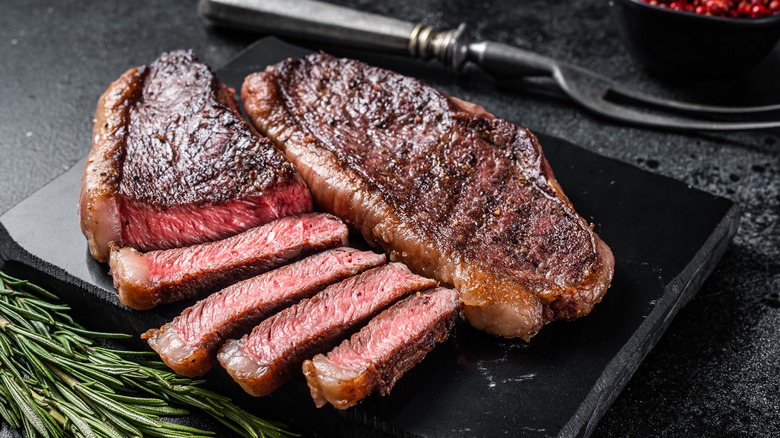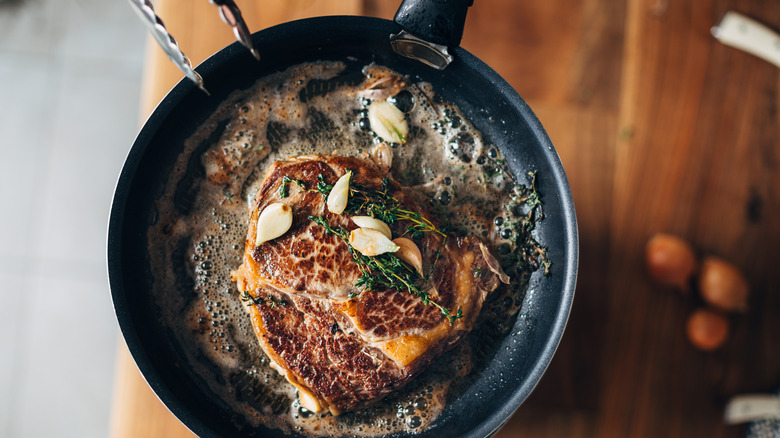The Unconventional Way To Cook Steak Without The Oily Mess
Whether it's date night or an evening after a long work day, there's always time to celebrate life with steak. Most cuts of steak are easy to sear and their versatility leads to globally-inspired recipes like Vietnamese shaking beef and miso-marinated skirt steak.
But when the joy of cooking and eating buttery steak comes to a close, one may be left staring at the kitchen with a distressed expression. Never mind the dirty plates. It's the splattered oil that's a bit of a mess to clean up. Granted, this is a normal part of cooking steak, as we've been taught to sear steaks in a hot pan to achieve that beautiful golden-brown crust on the outside, per What's Cooking America, which, inevitably, leads to glossy globs of oil on your stovetop.
But Christmas came early this year, and we've found an unconventional way to cook steak without the oily mess. So here's that gift to you.
Don't use a hot pan
Contrary to popular belief, America's Test Kitchen argues against using a hot pan to sear perfect steaks. In fact, they emphasize doing the opposite, sans oil.
Seasoned steaks should first be added to a non-preheated "cold" pan — ideally, one that has a nonstick surface or one made up of carbon steel. Zero oil is necessary. Next, crank the heat up to high and cook each side for two minutes. The steaks won't look deliciously brown yet, but patience eventually leads to perfection.
The final step involves lowering the heat to medium and flipping the steak every two minutes until your desired doneness is reached (be sure to use a food thermometer). You'll notice a crust slowly forming on each side of the steak, which certainly gives the popular hot pan method a run for its money. This process requires a little bit more time, but you'll be rewarded with tender steaks and an oil-free kitchen.
As Cook's Illustrated puts it, this method is like a combination of reverse-searing and stovetop-searing and works because the melted fat from marbled steaks acts as the "oil barrier" between the steaks and the pan. The source also suggests avoiding thin cuts of steak, which may be prone to overcooking on the inside.
So next time you're cooking steak, ask yourself this: would you rather spend a little more time cooking or a lot more time cleaning up?

